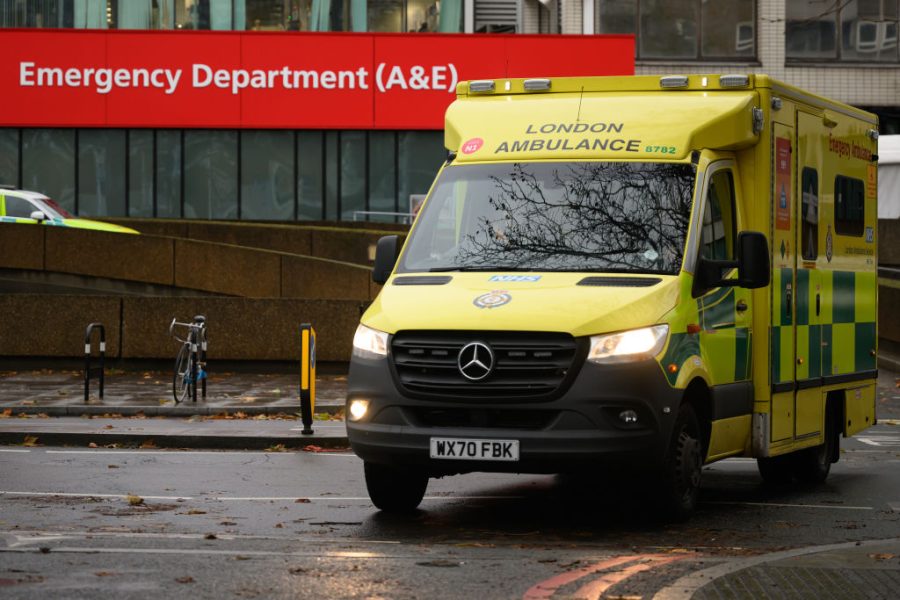Not a winter goes past without hospitals overflowing; the situation is so predictable it deserves a better word than ‘crisis’. Yet for patients and staff the sense of crisis is real, and connoisseurs of this annual event say that this year’s is especially dire.
Health Secretary Wes Streeting has spoken of his distress and shame, saying the state of A&Es breaks his heart. Hospital and ambulance trusts have been declaring critical incidents – as they do every winter. The real problem is not that this year is merely worse than the last, it’s the trajectory. Something is rotten in the state of our healthcare.
The mantra of ‘care in the community’ has translated into care in the corridor
Back in early 2014, 150 people waited more than twelve hours in A&E for a bed. By the start of 2024, the number was 150,000. These delays matter. They worsen distress and add indignity and, worse still, they cost lives. Care delayed by queues or relegated to corridors and parked ambulances becomes fatal.
Patients are supposed to spend less than four hours in A&E before being discharged or admitted to proper ward beds. Recent research shows that a patient’s chance of survival drops for every hour beyond this. Serious estimates suggest that last year the delays in our A&E departments meant 14,000 to 28,000 people died who would otherwise have lived.
Overcrowded A&Es aren’t new. At the turn of the century, each winter my hospital added ‘stationary cupboard 1’ and ‘stationary cupboard 2’ to its A&E bed board. ‘Stationary’ – rather than the correct ‘stationery’ – was the traditional NHS spelling, and the cupboard doors would be opened so the head of the patient’s stretcher could slide in, amongst the paper and the biros, a little further out of the way. They were appalling mockeries of what a hospital should offer, but in winter the patients placed in them were relatively fortunate.
Then, about twenty years ago, came the new target. Arbitrary, and introduced with no evidence that it would help, it required 98 per cent of A&E patients to be discharged or admitted within four hours. Ridiculed by the media – and by those of us in hospitals – it was an astonishing success. Emergency departments had been Cinderella services. Internal tariffs meant some patients – elective surgery, perhaps, or oncology – brought in money. The areas that welcomed them were carpeted and well staffed. Every patient arriving in A&E, on the other hand, cost money, and it was no coincidence that these departments were grimy and uncared for.
Their jobs suddenly depending on it, hospital managers decided casualty departments were what they had always cared about most. In order to have a look, some were reputedly able to find their way, almost without help, down to their own A&Es. The situation improved dramatically. I remember walking my medical director through the wide quietness of my hospital’s newly built and hugely expanded A&E. He shook his head and declared it far too big. Today, it looks like a disaster zone.
The four-hour target resulted in such exuberant gaming of the system that it demonstrated the untapped NHS talent for managerial creativity. Despite that, it improved the experience and the care of patients beyond belief. We had assumed it a fact of life that corridors and stationery cupboards needed to be crammed with patients, stuck there night after night. We discovered we were wrong.
I recall, afterwards, we asked each other how we had ever accepted such poor standards. But in 2010 the target was dropped to 95 per cent. The NHS was campaigning to move care into the community and to close beds, and 98 per cent ceased being possible. Currently, the stated aim is to get back to 95 per cent – but the interim target, because we’re failing so badly, is only 78 per cent. Last year’s performance was 72 per cent, and right now we’re worse. NHS England fudges the figures, combining those of urgent treatment centres and minor injury units which have none of these problems. Concentrate on the hospitals, and the figures are even bleaker.
Data scientist Steve Black recently wrote in the Health Service Journal of the ‘zombie idea’ that long waits are the result of increased demand. While A&E attendances have risen (26.2 million in 2023/24, from 21.6 million in 2011/12), much of this increase is in those minor injury units. Black has highlighted that A&E delays are explained not by attendances but admissions. Patients don’t queue because A&E staff fail to do their jobs, they queue because the hospitals have no beds.
Over the past 36 years, acute bed capacity has been cut by 42 per cent. Per capita, the UK has one-third as many beds as Austria and less than half as many as France. The mantra of ‘care in the community’ has translated into care in the corridor. Or worse: corridors are becoming the refuge of the fortunate. Last week, nearly 20,000 patients were delayed by more than an hour waiting to get into A&Es from parked ambulances.
NHS trusts want you to believe their nature is expressed by their mission statements; in reality, it’s on display in their A&E, and in most hospitals it’s a horror. The NHS was once cheap and relatively efficient; now it’s neither. Hospitals are limited in their managerial ability. Central government and national agreements withhold the tools that economies rely on for innovation and creative destruction, the ability to innovate or fail and the sharpened carrots of hiring, firing, and remuneration. Even the limited freedoms which allowed the improvements of academy schools have been withheld from healthcare.
Medical advances mean we live longer, with greater frailty, and healthcare costs rise as new interventions are developed. Unless we address this fundamental challenge, unless we are relentless in seeking out evidence-driven reform and in risking trial and error, the numbers dying in our hospital corridors will only continue to rise.
‘Nothing matters very much,’ Arthur Balfour famously claimed, ‘and few things matter at all.’ Yet many things do matter, and some matter very much indeed. The grim figures of A&E delays are facts, not factoids, and they signify needless suffering and avoidable death. Without a more serious response the predictable result of failure will be ever more lives blighted and lost, and an even worse crisis next winter.







Comments